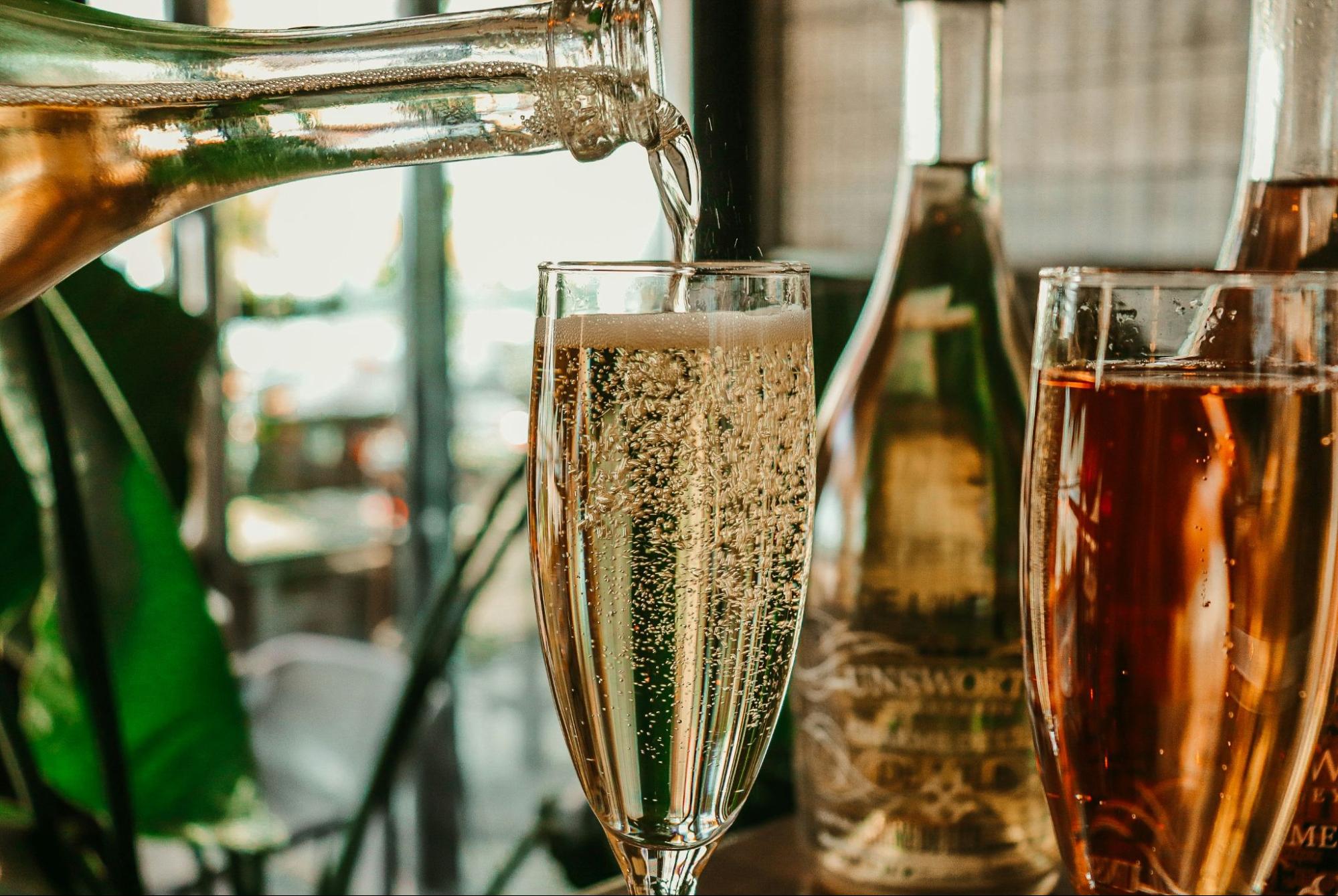- Wine Color/Type
- Top Occasions
- Unique Wines
- Surprise Me!
Exploring the World of Sparkling Wine
From Vine to Wine
Welcome to the exciting world of sparkling wine! We begin our journey by examining the various methods used to produce different types of sparkling wines enjoyed globally. People have different preferences for sparkling wines around the world. The cool climates help grow delicate grapes, and the careful winemaking process is important in creating these sparkling wines.
The world of sparkling wine is diverse (Photo: Aleisha Kalina, unsplash.com)
The Growing Environment: Nurturing Excellence
Sparkling wines thrive in cool climates where grapes face a delightful struggle to ripen fully. Champagne, England, and Tasmania have ideal conditions for grape growth, resulting in flavors and acidity perfect for sparkling wines. These regions provide the perfect environment for grapes to develop rich flavors. The grapes retain the necessary acidity for producing sparkling wines.
These regions have a reputation for producing high-quality grapes that are ideal for making sparkling wines. They have just the right balance of ripeness and acidity.
This balance is essential for creating sparkling wines with complex flavors and a crisp finish. The gradual accumulation of sugar results in base wines with lower alcohol content, a perfect foundation for the additional alcohol produced during the second fermentation process.
In contrast, warmer regions yield grapes with riper fruit flavors but lower acidity, suitable for short-aged wines. However, those seeking elegance and balance in their sparkling wines prefer cooler sites with less intense fruit flavors.
Grape Growing: The Essence of Excellence
Chardonnay and Pinot Noir reign supreme as the primary grape varieties for premium sparkling wines. Chardonnay's delicate apple and citrus notes harmonize beautifully with yeast autolysis, while Pinot Noir adds body to the blend. These varieties, along with local grapes like Macabeo and Glera, contribute to the unique character of sparkling wines worldwide.
This ensures we have an abundant supply of grapes. The winemaker needs the grapes to achieve the desired level of acidity and flavors in the wine. Harvesting occurs earlier than for still wines, ensuring grapes maintain the perfect balance of acidity and sugar.
Winemaking: Crafting Perfection
The winemaking process begins with gentle pressing, extracting delicate juice low in solids and phenolics. Primary fermentation usually happens in stainless steel tanks with special yeasts that can handle high acidity and low pH levels. The type of yeast can affect the wine's flavor. Some strains can enhance fruity notes, while others keep a neutral taste.
Blending, a hallmark of sparkling wine production, allows winemakers to achieve balance, consistency, and complexity in their creations. Whether blending different grape varieties, vineyard sites, or vintages, each component adds depth and character to the final product.
Traditional Method: A Time-Honored Craft
In the traditional method, second fermentation occurs in the same bottle as poured into the glass, creating the signature effervescence of sparkling wines. After bottling, the wine undergoes aging on the lees, where autolysis imparts distinctive biscuit notes and complexity. The time it takes to age the lees can vary from nine months to several years, depending on the desired style and quality.
Come with us as we explore the world of sparkling wine. You will discover a wide variety of bubbly delights. These are waiting for you to explore and enjoy. Keep an eye out for the upcoming segment, where we will explore more about the regional subtleties.
Lotte Gabrovits
[insert:wine:krug-grande-cuvee-brut-champagne-0]
[insert:wine:pere-mata-cava-cupada-rose-0]
[insert:wine:cielo-e-terra-prosecco-frizzante-0]
Latest articles

